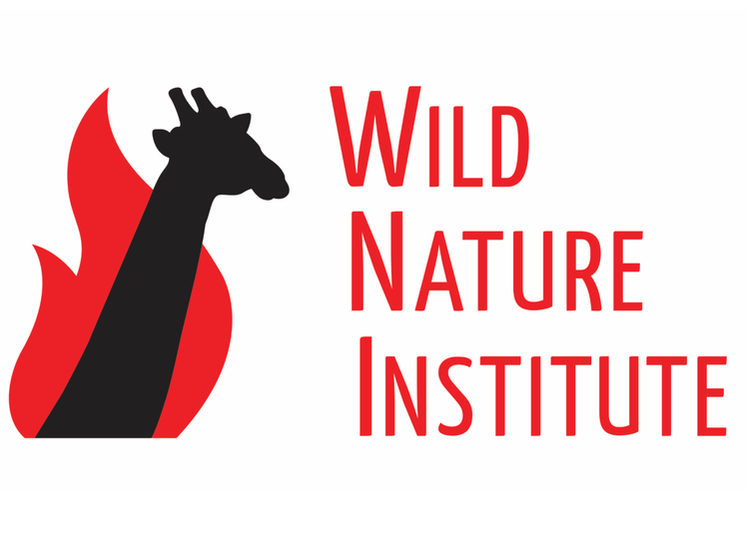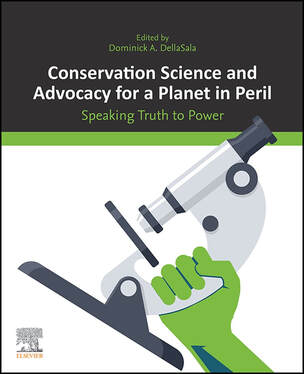 As practitioners or beneficiaries of science, we all have a stake in ensuring that science is not hijacked or corrupted by special interests. Science is a practical method to gain knowledge, but some knowledge is dangerous to those people protecting a paradigm they hold dear, or industries that profit from public ignorance about their activities. Like democracy, science requires free speech and free press to function properly such that the marketplace of ideas can consider any new, even shocking idea, and then empirically judge its veracity. In practice, the marketplace of ideas is severely skewed in favor of entrenched power structures and status quo ideologies of thought collectives, but dissidents still can and do change the world. "When scientists are attacked: strategies for dissident scientists and whistleblowers" is a chapter in the book 'Conservation Science and Advocacy for a Planet in Peril', edited by Dominick DellaSala and published by Elsevier. The chapter was written to help scientists whose findings or ideas challenge powerful economic or intellectual interests and find themselves under attack. There is a long history of intellectual gatekeeping of ideas in science. Examples include the denigration of Darwin's theory of evolution and Galileo's discoveries, which challenged the authority of the Catholic Church. The strong influence that ideological elites have had on science has obvious scientific, political, and economic implications, yet scientists have few roadmaps for navigating the minefield they will encounter when promoting findings that conflict with powerful peoples' status quo. Outspoken scientists often risk their professional reputations, and even careers. Many scientists are afraid to even practice good science when they know it will go against powerful interests. After defining contrarian scientists, dissident scientists, and whistleblowers, the authors describe likely responses from gatekeepers and thought collectives, along with strategies for dissident scientists and whistleblowers to get their voices heard, or just to defend themselves from ideological attacks. There are signs of progress in making science more transparent and open, which in turn could help amplify the voices of dissidents and whistleblowers. The authors conclude with a call for honesty and integrity in the practice of science, scientific publishing (including editorial decisions), peer review, education, and public policy. Such activities will dissolve the power that the gatekeepers and thought collectives wield to suppress contrarian and dissenting scientists that have legitimate and provocative research views to contribute. The book is a history of scientific activism as well as a guide for scientists whose conscience demands they raise their voices to be heard in this age of disinformation.
0 Comments
We have finished our giraffe photographic identification surveys for 2021! We surveyed Tarangire, Lake Manyara, Arusha, and Serengeti National Parks and part of Ngorongoro Conservation Area - a substantial portion of giraffe populations throughout northern Tanzania. This marks our 10th year of data collection! Now we can relax for a bit, like this magnificent male giraffe chilling out on the shore of Lake Manyara.
lAlthough female giraffes have closer ‘friends’ than male giraffes, male giraffes have more ‘acquaintances’ than females, according to a new study by an international team of scientists. The study demonstrates that giraffes form a complex multilevel society that is driven by differences in the social connections among individuals, which could have conservation implications for the endangered species. “The degree to which an animal is connected to others in its social network influences reproductive success and population ecology, spread of information, and even how diseases move through a population,” said Derek Lee, associate research professor at Penn State and co-author of the paper. “Information about sociality therefore can provide important guidance for conservation.”
The research team examined social connectedness and social movements of endangered Masai giraffes in the Tarangire Ecosystem of northern Tanzania using data collected over 5 years. The work, led by Juan Lavista Ferres of the Microsoft AI for Good Research Lab, involved constructing the social network of more than 1,000 free-ranging giraffes. The team presents their results in a paper appearing September 27 in the journal Animal Behaviour. “We found that male giraffes overall had higher social connectedness than females, which means males interact with greater numbers of other individuals than females,” said Lee. “Older males had the shortest social path length to all the other giraffes in the network. This might reflect the mating strategy of males, who roam widely across the landscape searching for females to mate with and make connections in the process. Young males had the most social ties and moved most often among groups, reflecting social exploration as they prepare to disperse away from their mothers.” According to the study, adult female giraffes tend to have fewer but stronger relationships with each other than males and younger females, a trend that has also been observed in giraffe populations elsewhere in Africa. The results reveal an additional layer of complexity to giraffe societies beyond what was seen in earlier research. Earlier research showed that adult females in this population have formed about a dozen distinct groups, or communities, of 60 to 90 individuals that tend to associate more with each other than with members of the other groups, even when the groups use the same spaces. Given the high social connectedness of males, the current study found that the full population, including calves and adult males, has a more complex structure, with the female communities embedded within three socially distinct ‘super-communities’ of between 800 to 900 individuals, and one ‘oddball’ super-community of 155 individuals in a small, isolated area. “Among giraffes, adult females have enduring social relationships and form distinct and stable social communities with a relatively large number of other females, while, in their perpetual search for mating opportunities, adult males connect the adult female communities, forming super-communities,” said Monica Bond, a postdoctoral research associate at the University of Zurich and co-author. “This type of complex society has evolutionary and conservation advantages, because the dynamics of the social system should allow gene flow between groups, which is an important part of maintaining a healthy and robust population.” The current research adds to a growing body of literature demonstrating that giraffes live in a socially structured society, despite the fact that herds have what researchers call “fission-fusion” dynamics, with the size and composition of the population constantly changing as animals move through the environment. Fission-fusion grouping dynamics are common among mammals, such as elephants, bats, some primates, and cetaceans, but, according to the researchers, this study is the first to demonstrate that giraffes reside in a complex society with dynamic herds embedded into stable communities within stable super-communities, all of which are driven by the variation in social connections among individuals. “The large scale of the study, in terms of the size of the landscape and the sheer number of animals, enabled us to uncover an upper apex level of social structure that was previously unknown,” said Lavista. “Using Microsoft’s AI tools allowed us to visualize and analyze a large volume data to gain meaningful insights about giraffes over the 5 years of study.” The researchers believe the complex nature of giraffe populations could impact conservation efforts for these endangered giraffes, including translocation efforts that move individuals to new areas. They caution that translocating a small number of individuals to new areas should be limited, because such invasive actions destabilize the intricate web of social relationships among giraffes. In addition to Lee and Bond also of Wild Nature Institute, and Lavista, the research team includes Md Nasir and Avleen Bijral at the Microsoft AI for Good Research Lab; Yu-Chia Chen at the University of Washington, Seattle; and Fred Bercovitch at Kyoto University in Japan. Literature: Juan M. Lavista Ferres, Derek E. Lee, Md Nasir, Yu-Chia Chen, Avleen S. Bijral, Fred B. Bercovitch, Monica L. Bond. 2021. Social connectedness and movements among communities of giraffes vary by sex and age class. Animal Behaviour https://doi.org/10.1016/j.anbehav.2021.08.008 Dispersal, the process where animals reaching sexual maturity move away from family, is important for maintaining genetic diversity and is key to the long-term persistence of natural populations. For most animals, this involves having to make risky journeys into the unknown in the hope of finding new communities in which to settle and reproduce. However, many animal societies—including those of humans—have structured social communities that overlap in space with one-another. These potentially provide opportunities for maturing individuals to disperse socially without having to make large physical displacements. New research published today by Wild Nature Institute scientists and colleagues in the Journal of Animal Ecology shows that this strategy is employed by young dispersing giraffes. The process of moving away from family is known as natal dispersal. Dispersal is a fundamental biological process that has been shown to reduce the chances of mating with a relative, ensuring that individuals have healthy offspring. However, dispersal is first and foremost a social process. Nevertheless, it has been mostly studied as a spatial process because in most animals, families defend physical areas excluding others, forcing young to have to leave this area to establish their own family. A research team, led by University of Zurich (UZH) postdoctoral research associate and WNI principal scientist Dr. Monica Bond, tested whether animals that live in structured societies comprising social communities that overlap in space with one another could disperse simply by switching communities. Doing so would avoid the risks of moving through the unknown. The researchers studied a large population of hundreds of giraffes in northern Tanzania. Using data on group composition collected over a huge 2200 km squared area, the team found that most male giraffes leave home once they reach reproductive maturity, and that a significant proportion of these achieve their dispersal by simply switching to new social communities, thereby avoiding the risks of moving far from home. On the other hand, most young female giraffes remained within the same community into which they were born. While sex differences in natal dispersal are well established in animals, this study is amongst the first to demonstrate how living in a structured society provides a unique opportunity for maturing individuals to find a new social community without having to move to new areas. Complex Giraffe Societies The team of scientists from UZH and Penn State University previously documented that the adult female giraffes form distinct social communities. The membership to these communities, comprising about 60 to 90 individual females, is very stable over time, despite social groups that are made up of these members merging and splitting throughout each day. They found that these social dynamics have two major consequences. The first is that females maintain enduring social bonds with other females in their community, with bonds likely to last over their entire lifetimes. The second is that these communities are completely structured socially, with different communities using the same physical space. Thus, while individuals from different communities might occasionally encounter one another, they rarely, if ever, form groups together. “This led us to wonder whether maturing young giraffes might forge relationships with the members of nearby female communities that are different from their birth community, to avoid accidentally mating with their relatives, without having to travel long distances into unknown and possibly dangerous places,” says Dr. Damien Farine, co-author and UZH Eccellenza Professor. What they found was that, like in most other mammals, dispersal was predominately done by males, with dispersers leaving at about 4 years of age. “The key question was then to ask what strategies young males used to find new communities in which they could search for unrelated mates or avoid conflict with relatives,” says UZH professor Dr. Barbara König, senior author of the study. Females Stay in the Same Social Networks, Males Switch The team used social network analyses to quantify the social communities of adult females, and then monitored which community 67 male and 70 female calves associated with as they matured over a 7-year period. The data revealed that while four out of five of young male dispersers switched to social communities different from their birth communities, about one in four of the male dispersers switched communities while staying relatively close their birth site. In other words, they were able to disperse without having to move far at all. “This type of social dispersal, where males remained close to home but joined different female communities, would not be detected if only spatial movements were measured,” says Bond. Giraffes may not be unique in being able to disperse socially without having to move away from home. In many other species, including dolphins, elephants, and bats, researchers have reported merging and splitting of groups—called ‘fission-fusion’—within a larger, more stable social community. “It would be interesting to see if dispersing socially within the same physical space is a common strategy that is employed in species that live in societies with many overlapping social communities” Bond says. “Given the importance of maintaining healthy populations, the more we understand the natal dispersal process, the better we can help conserve wildlife.” According to giraffe expert Dr. Fred Bercovitch, who was not part of the study: “This research has crucial implications for the conservation of giraffes because it demonstrates that the preservation of genetic diversity in giraffes requires saving large ecosystems that allow animals to disperse into different communities, and not the translocation of a handful of giraffes to a new area, where breeding opportunities are limited.” Last Friday 17th September Wild Nature Institute with Esilalei Primary school in Monduli district celebrated Tanzania’s national animal by hosting a Giraffe Fun Day. The event attracted hundreds of students as well as teachers and elders from the local Maasai community. Kids built a giant giraffe sculpture out of trash collected from around school, played sports (team Giraffe vs team Rhino!), drew pictures of wildlife, and danced and sang traditional songs. The kids also received a delicious meal of vegetables, pilau, and beans, so that they connect giraffe conservation with food and fun! The aim of this ceremony was to raise our voices that giraffes are endangered and to remind students and the community that it is everyone’s responsibility to protect our environment and giraffes. Teachers and students like these fun days because it gives them an opportunity to express their different talents while celebrating the world’s tallest animal. Female Masai giraffes live in distinct social communities of up to 90 other friends, and although areas used by these ‘girl gangs’ often overlap, they have very different rates of reproduction and calf survival. This means the girl gang social units may be important to giraffe evolution. These findings were published this week in the Journal of Wildlife Management by a team of scientists from Penn State University and University of Zurich as part of the largest giraffe study in the world. “We used social network analysis of hundreds of females and discovered this girl gang social organization from the giraffe’s own preference and avoidance behaviors,” said Derek Lee, associate research professor at Penn State and senior author of the study. “Gang membership was pretty tight, and even though members of different girl gangs often spent time in the same areas, members of different communities rarely interacted with each other.”
The scientists further found that calf survival and reproductive rates were different among these social communities, even when communities’ home ranges overlapped in space and therefore shared similar environmental conditions. “This shows that population structure can arise from social behavior rather than discrete space use,” noted Monica Bond, lead author and research associate at the University of Zurich. “These social subpopulations have different survival and reproductive rates, so some might have greater competitive abilities than others, like being able to dominate the better-quality food, or there might be cultural differences such as having better strategies for protecting their calves from predators.” Each giraffe social community exhibited different social characteristics, like how strong the relationships were among the community members. There was also a gradient in environmental characteristics in which the giraffe communities lived: the Tarangire region of northern Tanzania where the study occurred includes two national parks, a livestock and ecotourism ranch, and unprotected lands inhabited by traditional cattle ranchers, as well as several densely populated towns surrounded by agricultural lands. The scientists wondered how the environmental or social conditions experienced by the giraffes might influence their survival and reproduction. “Survival and reproduction together determine whether a wildlife population (or subpopulation like a specific girl gang) increases or decreases and is therefore absolutely critical for conservation,” said Lee. The team calculated the survival rates of more than 1,400 adult females and calves, and the annual number of calves per female, and examined if there were differences among the social communities. They then investigated if the differences were explained by social factors like the strength of relationships, or by features of the environment, such as how close to people the giraffes roamed, the fertility of the soils, or the kind of vegetation in their ranges. Giraffe calf survival was higher in social communities that had less area of dense bushlands in their ranges, possibly because lions prefer to hunt in such thickets where they can stalk their prey unseen. “We also found that calf survival and reproductive rates were higher in the social communities that spent more time outside of the national parks,” said Bond, probably also because there are fewer natural predators like lions and hyenas near where people live. Some areas outside the parks also had more fertile volcanic soils and therefore possibly more nutritious food than on other soil types. “The good news for conservation is that giraffes can survive and raise their offspring in areas close to people,” Lee pointed out. “We can help giraffes to thrive by giving them enough living space in the savanna—both inside and outside of national parks—and by taking care not to disturb them and disrupt their social relationships.” Wild Nature Institute celebrated the international day of forests by planting trees at Eunoto primary school, at Mungere village. A total of 150 native trees were planted with the help of students. Each student dug a hole and prepared organic manure from cow droppings and did the planting and watering themselves. Most of the students are coming from Maasai pastoralist communities. The area has plenty of water with a lot of birds and other wildlife from Lake Manyara and Mto wa Mbu. All trees were planted successfully, thanks to kids who were learning quickly and eager to do the planting on their own. The school administration promised to look after trees and see them grow healthy. We were joined by village officers and ward forest officers in the event, who were thankful to Wild Nature Institute for doing this for their village
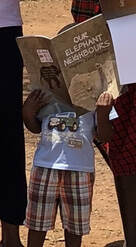 Wild Nature Institute donated 150 of our Celebrating Africa's Giants bi-lingual (Kiswahili and English) children's books to 25 primary school libraries in Kenya, in partnership with Books Are Power, Inc. These libraries together serve more than 7,000 Kenyan primary school children per year. We are excited to share some photos of Kenyan children enjoying Our Elephant Neighbours, Juma the Giraffe, and Helping Brother Rhinoceros. These storybooks help make learning about African wildlife fun and accessible, while teaching language skills with the story side-by-side in English and Kiswahili. |
Science News and Updates From the Field from Wild Nature Institute.
All Photos on This Blog are Available as Frame-worthy Prints to Thank Our Generous Donors.
Email Us for Details of this Offer. Archives
March 2024
|
|
Mailing Address:
Wild Nature Institute PO Box 44 Weaverville, NC 28787 Phone: +1 415 763 0348 Email: info@wildnatureinstitute.org |
|

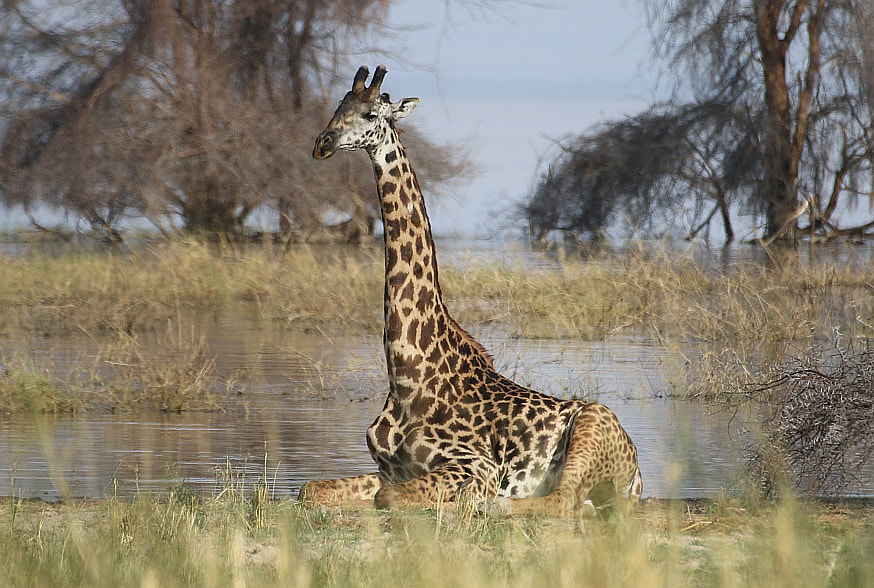
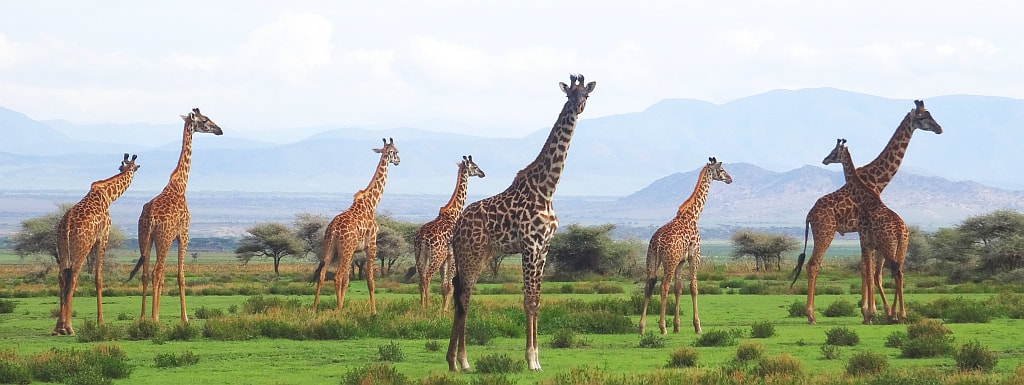
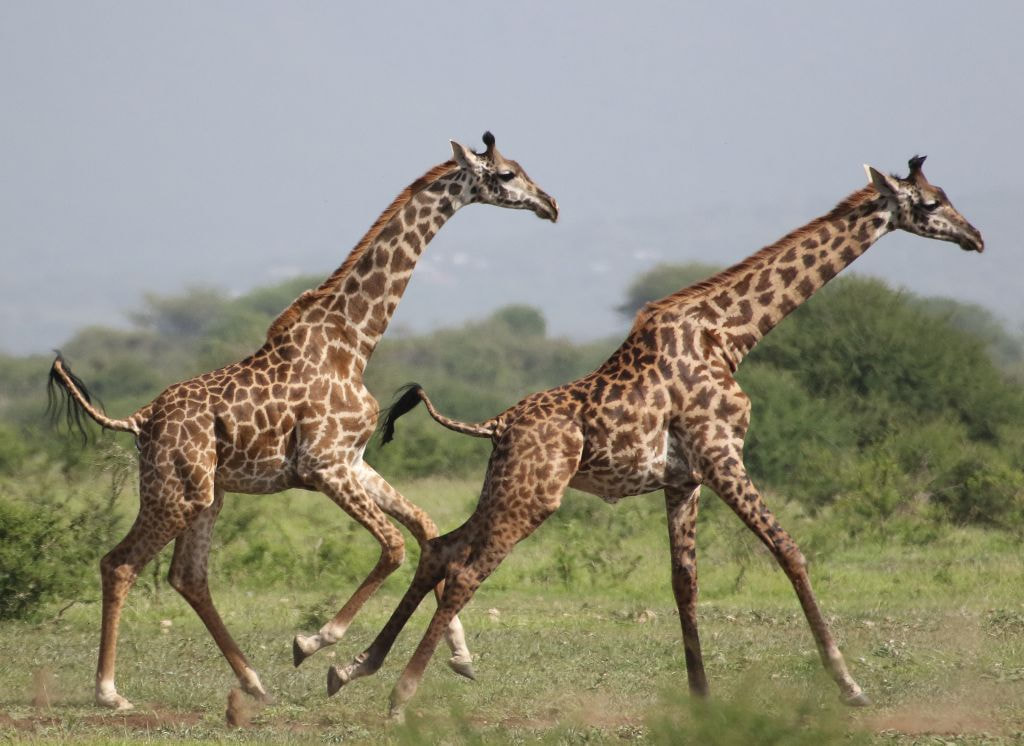
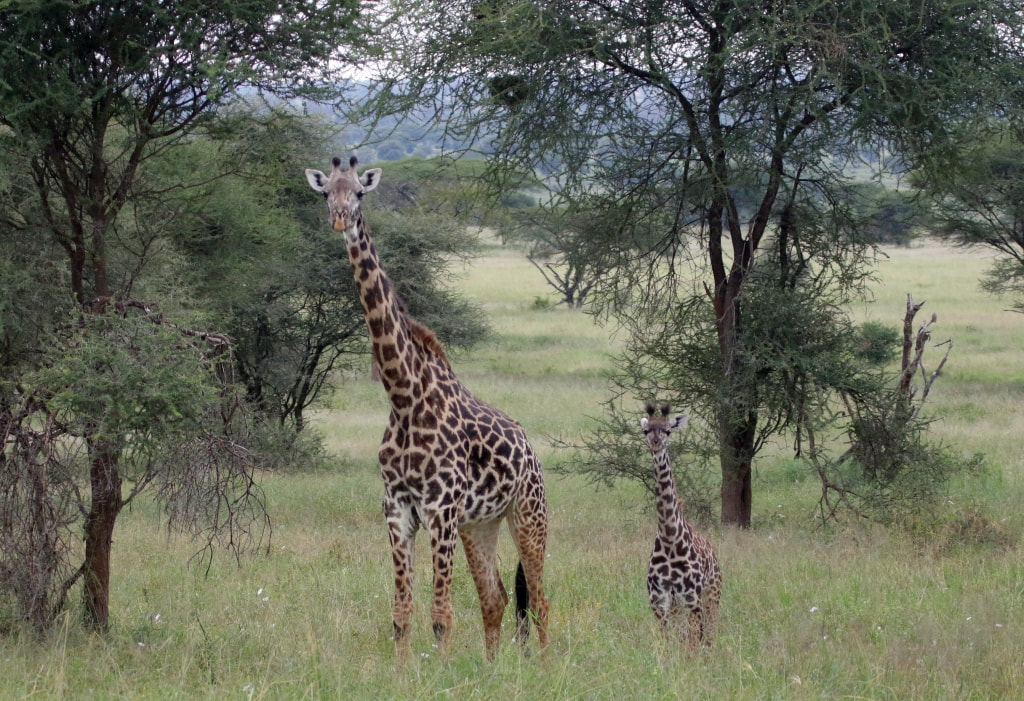
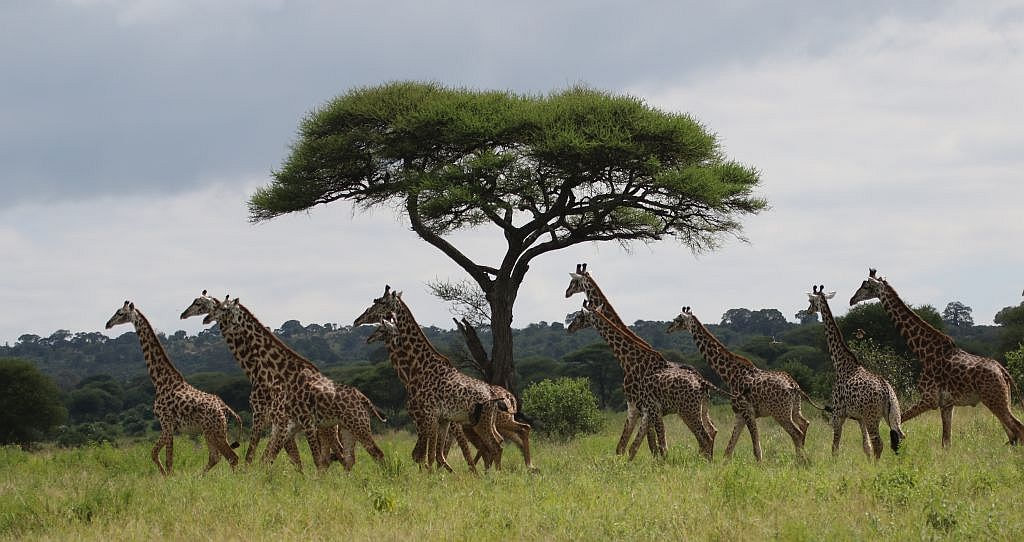
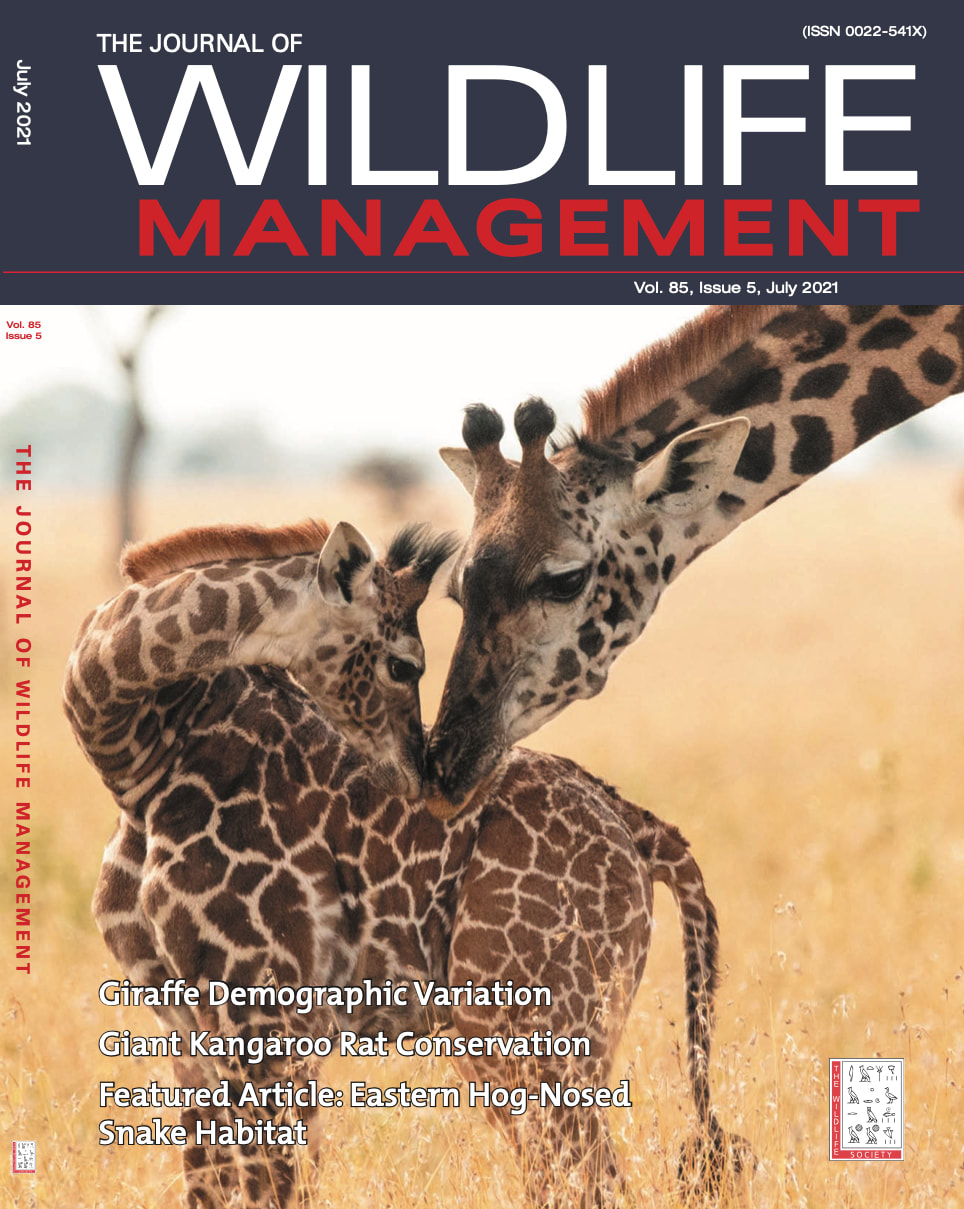
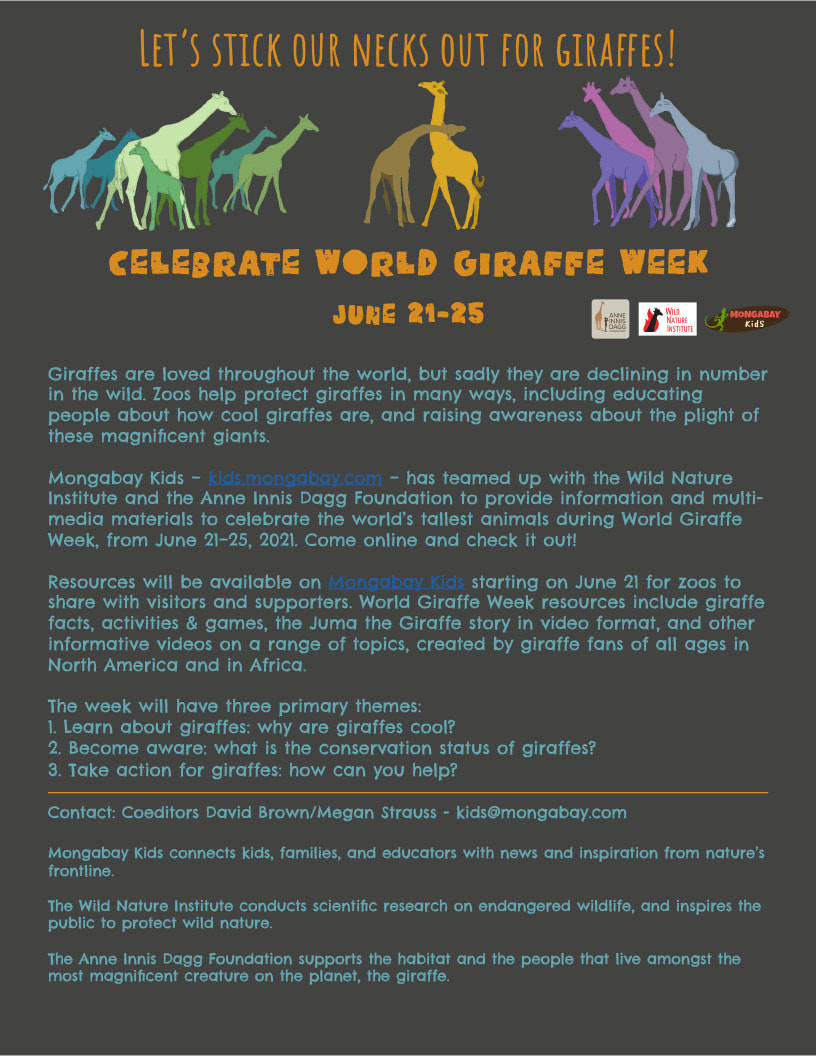
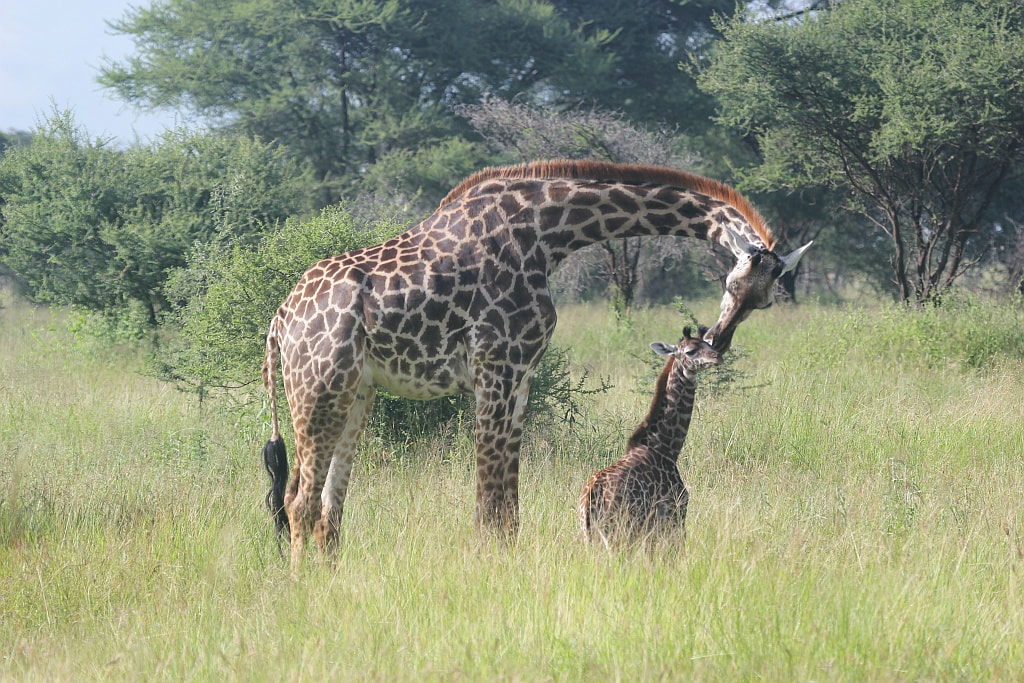
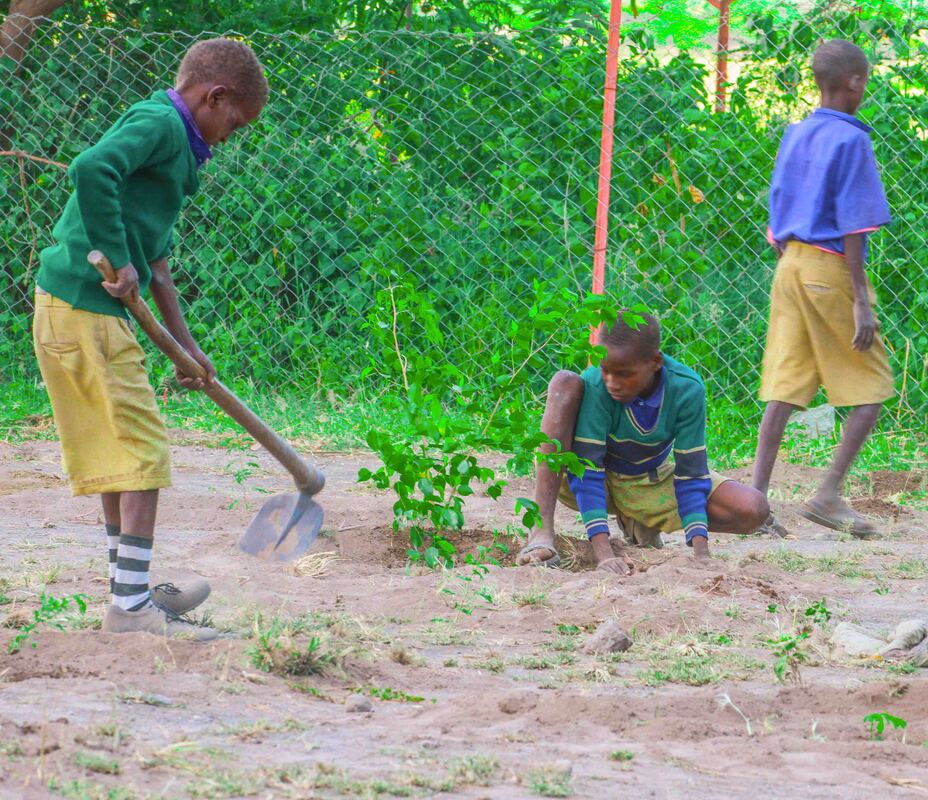
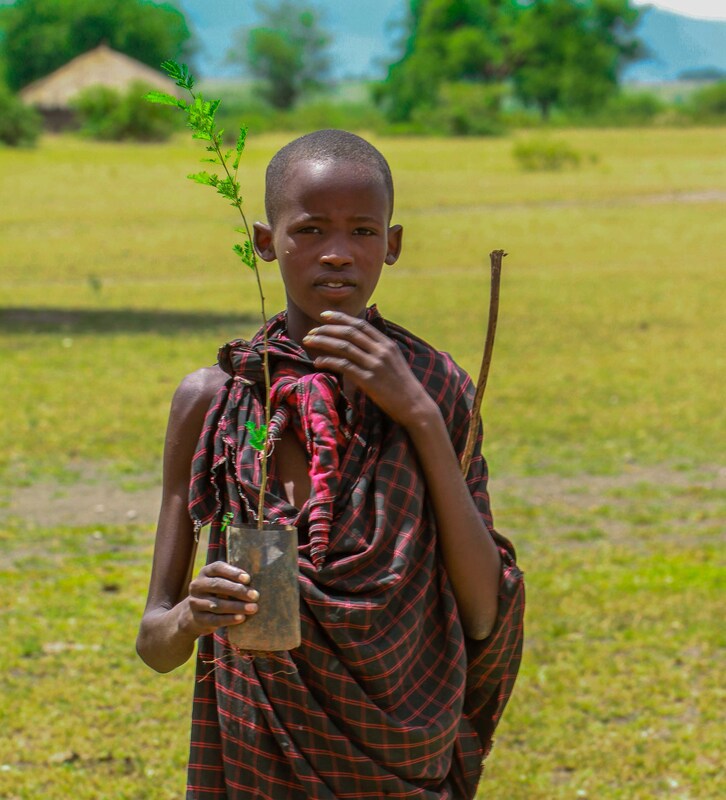
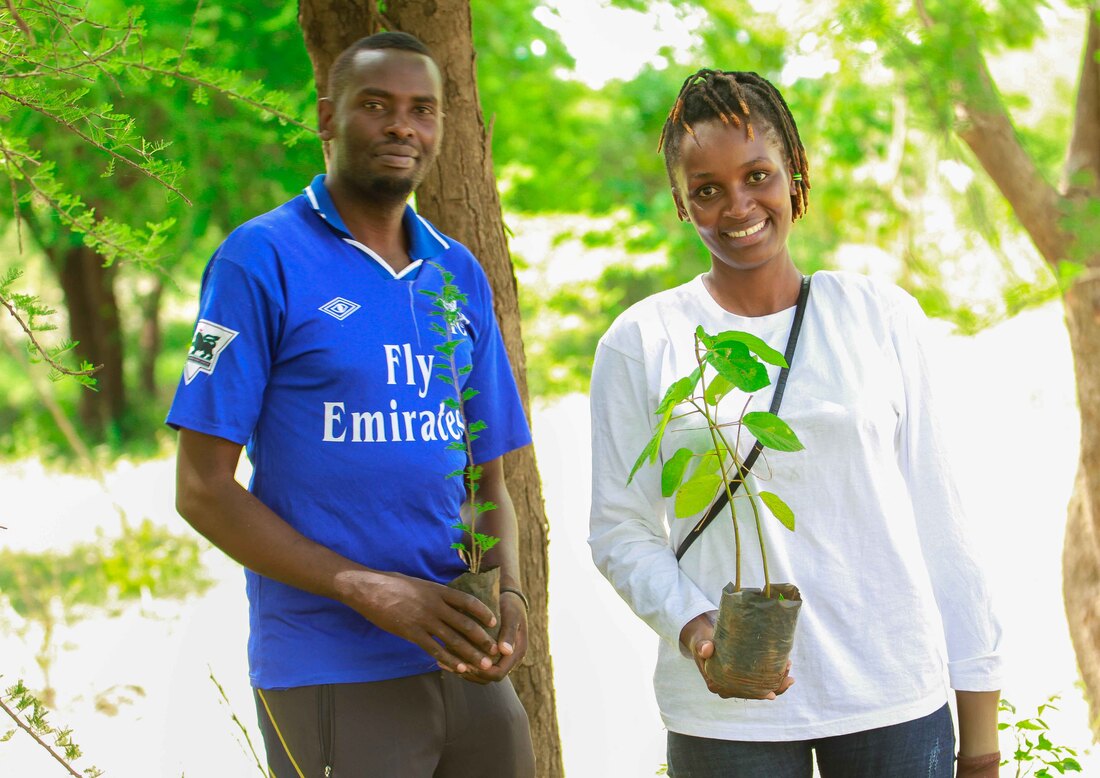

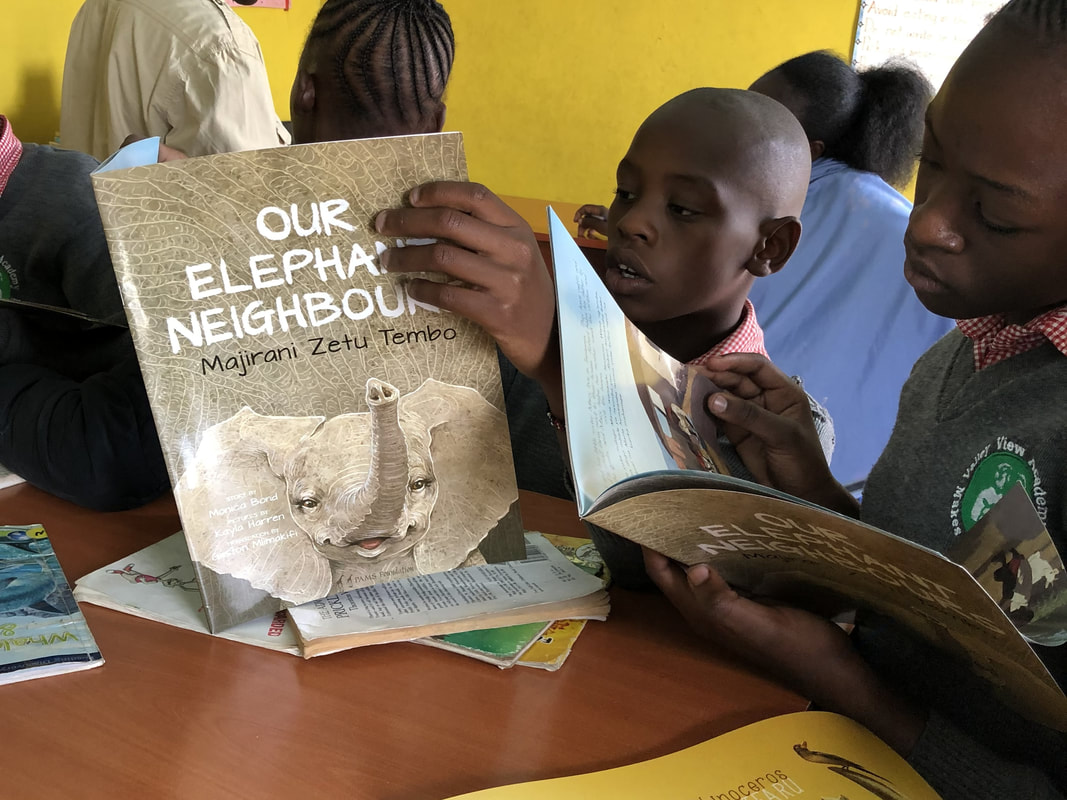
 RSS Feed
RSS Feed
